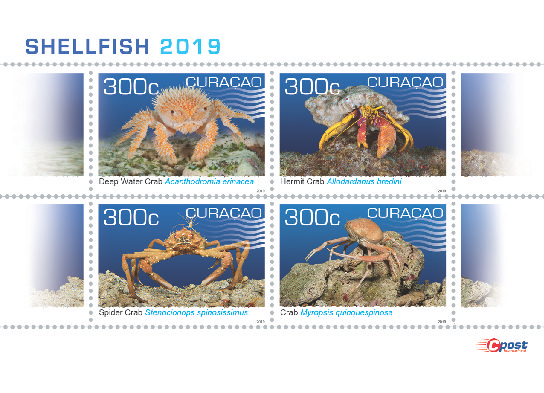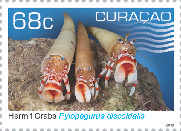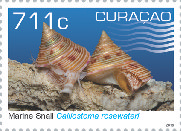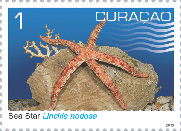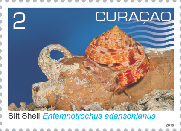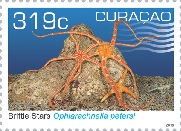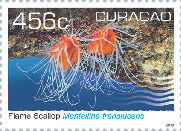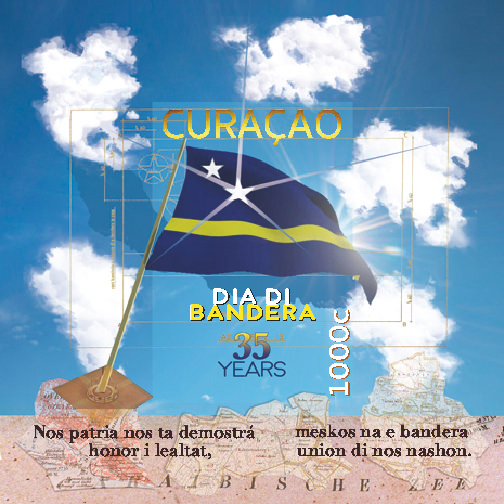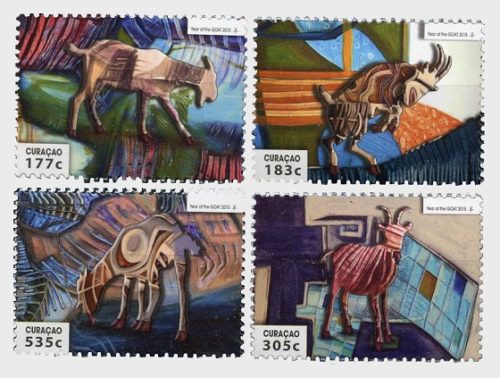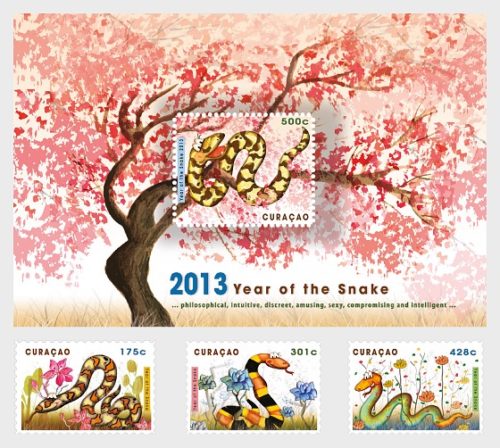Description
SOUVENIR SHEET
300c • Deep Water Crab Acanthodromia erinacea
Rare, live, deep water crab, (Acanthodromia erinacea) about the size of a quarter, discovered and collected between 950-1000 feet by a manned submersible called the Curasub. Substation Curaçao, Curaçao Sea Aquarium, Curaçao, Netherlands Antilles.
300c • Hermit Crab Allodardanus bredini
A rare, deep water hermit crab (Allodardanus bredini) found between 425 feet by a manned submersible called the Curasub living in a (Siratus consuela) shell. Substation Curaçao, Curaçao Sea Aquarium, Curaçao, Netherlands Antilles.
300c • Spider Crab Stenocionops spinosissimus
Also know as a Tenspine Spider Crab is a very large deep-sea crab measuring 12-16 inches in width. Look closely and you will notice a small Anomalothir furcillatusthis crab riding on top of his head. Both of these deep-sea specimens were found between 850-1000 feet. Crabs are arthropods, which are invertebrates with a segmented body, jointed appendages and an exoskeleton.
300c • Crab Myropsis quinquespinosa
This peach-colored crab is found on the continental slope from Massachusetts to Brazil and lives at a depth of 850-1000 feet. Known as a Fivespine Purse Crab, this large deep-sea crab is an arthropod, which are invertebrates with a segmented body, jointed appendages and an exoskeleton.
STAMPS
68c • Hermit Crabs Pylopagurus discoidalis
Three rare, deep water hermit crabs (Pylopagurus discoidalis) living in discarded tusk-shells. These 2-3-inch specimens were discovered and collected between 700-1000 feet by a manned submersible called the Curasub. The most striking feature of the animal is it’s chelae, a shield-shaped appendage that allows it to firmly seal it’s shell when alarmed or threatened. BAR-2535 shows these crabs in their “alarmed mode”. Substation Curaçao, Curaçao Sea Aquarium, Curaçao, Netherlands Antilles.
Cat 1 • Sea Star Linckia nodosa Perrier, 1875.
This species typically has several small to large lumps on its upper surface. It reaches a diameter of about 10 inches. Color is variable, but it usually is light brown to cream with scattered darker patches It can be found on hard or soft bottoms and it ranges from North Carolina to Brazil in 30-650 meters. Preferred food may include sponges, and fragments of organic debris.
Cat 2 • Slit Shell Entemnotrochus adansonianus, (Crosse & Fischer, 1861)
Slit shells were common in the fossil record, but believed to have become extinct together with the dinosaurs. Adanson’s slit shell was the first living species to be discovered. Considered to be a “living fossil”, it survives on steep rock walls at depths of 80 to 250 meters throughout the western Atlantic, ranging from Bermuda to Uruguay.
319c • Brittle Stars Ophiomyxa flaccida (Say, 1825).
This brittle star can reach a diameter of up to 12 inches. The central disk is soft to touch and the five snake-like arms are very flexible. It displays an astonishing range of colors, including green, brown, yellow, orange and red in various combinations and patterns. It lives in a great variety of habitats – coral reefs, seagrass beds, rocky areas. Preferred food includes sponges, algae, and fragments of organic matter. This active species usually feeds at night, remaining concealed during daylight hours. It is common in Bermuda, Florida, the Caribbean, and in South America down to Brazil, in depths from 0 to 100 meters.
456c • Flame Scallop Mantellina translucens Harasewych & Temkin, 2015
This recently discovered species lives singly or in pairs attached to vertical rock walls off the coast of Curaçao at depths of 300 meters or more. The red animal can be seen through the paper-thin, translucent shell.
711c • Marine Snail Calliostoma rosewateri Clench & Turner, 1960
These animals, with their small, brightly colored shells, inhabit rocky bottoms along the eastern and southern margins of the Caribbean Sea at depths ranging between 250 and 450 meters. The feed on encrusting organisms such as sponges.
ENVELOP
Starfish Pawsonaster parvus (Perrier, 1881).
A small (rarely exceeds 2 inches across), thick, and “bony” sea star, which usually lives on hard bottoms – rocks and rubble. The color varies, from very pale yellowish orange to cream or beige with bright orange patches. This species feeds by grazing on tiny plants and animals that grow on hard surfaces, and it ranges from South Carolina, USA through the Caribbean to Uruguay, at depths of 30 to 600 meters.
